5 Elements of Future-Proof Multisite Design Data Management
Industry Survey Report Highlights: IP reuse, Design Predictions, Cloud Usage
By Dean Drako, President & CEO, IC Manage
I. Introduction: System & Hardware Design Scaling Driving Collaboration Efficiencies
Our semiconductor and systems industry has been experiencing a major upturn, with multisite global development teams designing around the clock. They are managing unprecedented data volumes and complexities across diverse design flows – custom, digital, and mixed-signal ICs, packaging, and systems.
Below are insights based on an independent industry survey of 137 design and verification engineers and engineering management run in September and October of 2021.
The participants gave specific feedback regarding the Design & IP Data Management (DDM) elements they view as most important in maximizing team collaboration efficiency and innovation – both today and to future-proof their systems. The five fundamental elements covered are:
- Multisite, global design management
- Predicting delivery dates & resource needs
- IP creation, IP reuse & monitoring
- Managing multiple DDM systems
- Cost-effective, fast cloud compute access
What is Design Data Management?
Design data management (DDM) refers to the system and methodology used to support file and data exchanges between system/chip design and verification engineers working on a design, including reusing individual IP blocks within the design — typically across multiple development sites. Design data management also encompasses the ability to quickly execute analytics on the design data, such as for design and verification progress, along with efficient data transfer and storage when running EDA applications, such as for cloud bursting.
II. Survey Results: Five Elements of Future-Proof Design Collaboration
II-1. Multisite, global design & IP management
The number of companies doing multisite design continues to grow; mergers and acquisitions result in multiple development teams, often geographically dispersed.
This trend continues even with the resurgence of venture investment in new chip startups, as large and small companies both require access to top engineering talent, regardless of location, and face pressure for round-the-clock development progress in their race toward tapeout.
In 2021, 89 percent of the organizations surveyed said they are doing multisite design & IP management (two or more development locations), up from 82 percent in 2014.
Multisite design & IP data management systems improve collaboration efficiency by eliminating local silos, connecting all design and verification data engineering team members to the relevant data for analog and digital design, IP, SOC, packaging, and systems design and verification.
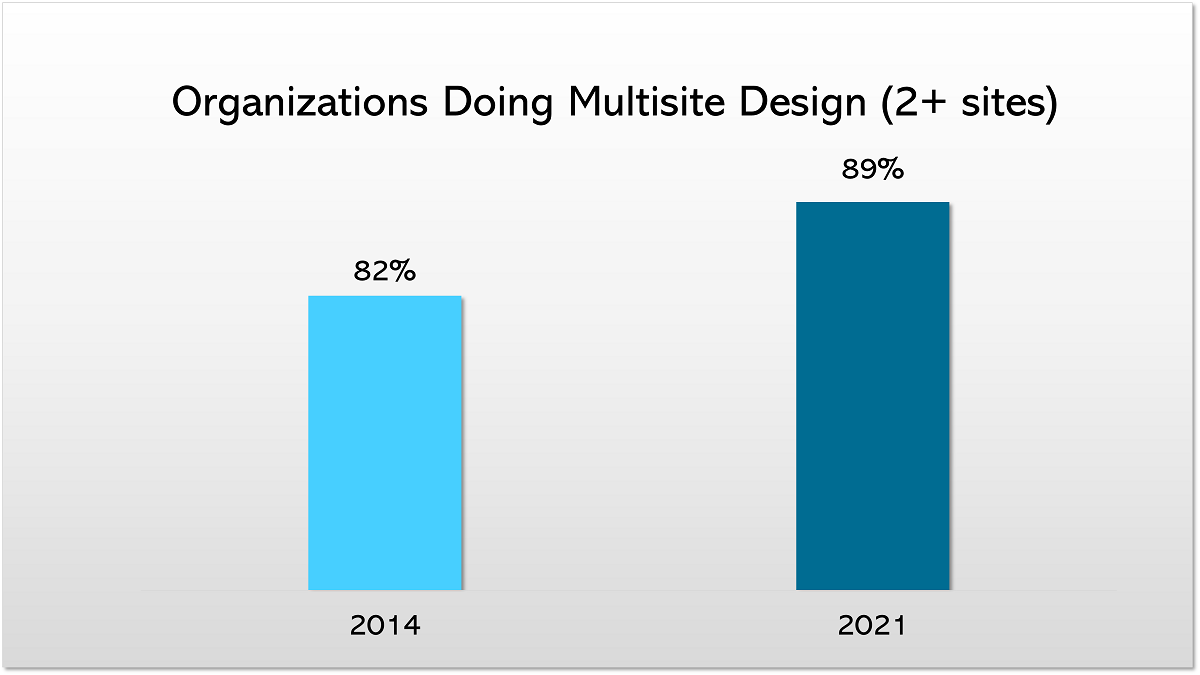
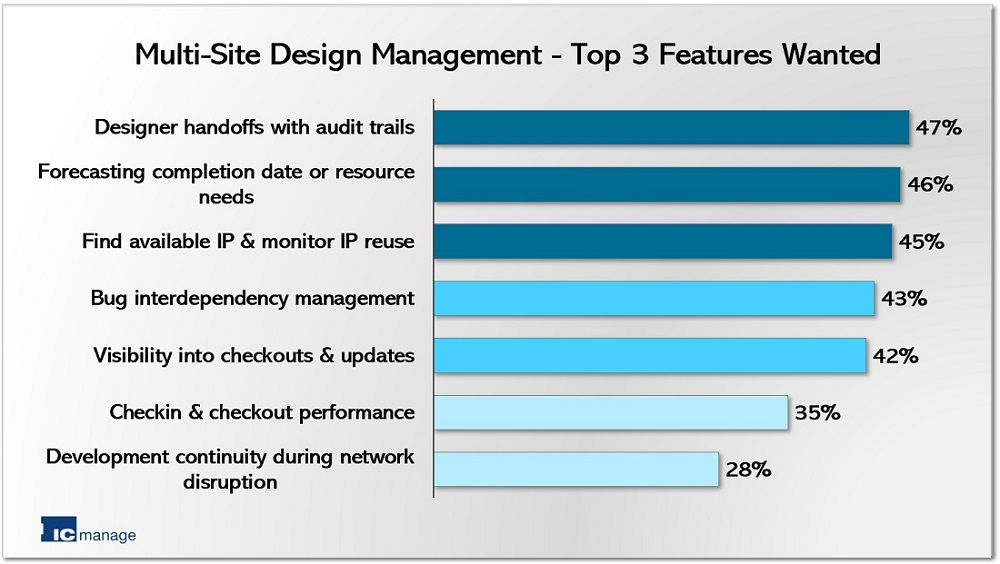
Multisite DDM then places additional demands on design & IP management systems to achieve efficient collaboration across geographically divided design and verification teams.
Nearly half of the survey respondents cited the following features in their top three priorities: Designer handoffs with audit trails (47%); forecasting the completion date and resource needs (46%); and finding available IP & monitoring IP reuse (45%).
These top three items were closely followed by bug interdependency management (43%) and visibility into check-ins and check-outs (42%).
II-2. Predicting delivery dates & resource needs
Advanced DDM systems can provide the unique ability to readily access and analyze all the current and historical design data. The data volumes can be terabytes — and even petabytes.
These systems can then utilize the centralized access — along with big data analytics — to automatically deliver real-time, predictive insights as the designs progress, to help optimize resource allocation and ensure project deadlines are met.
The top two items that engineering teams want to forecast were the resource and schedule impact of late design changes (53%) and project resource requirements (52%).
The second-tier items sought were predicting initial tapeout dates (37%) and the impact of moving to a new process node (29%).
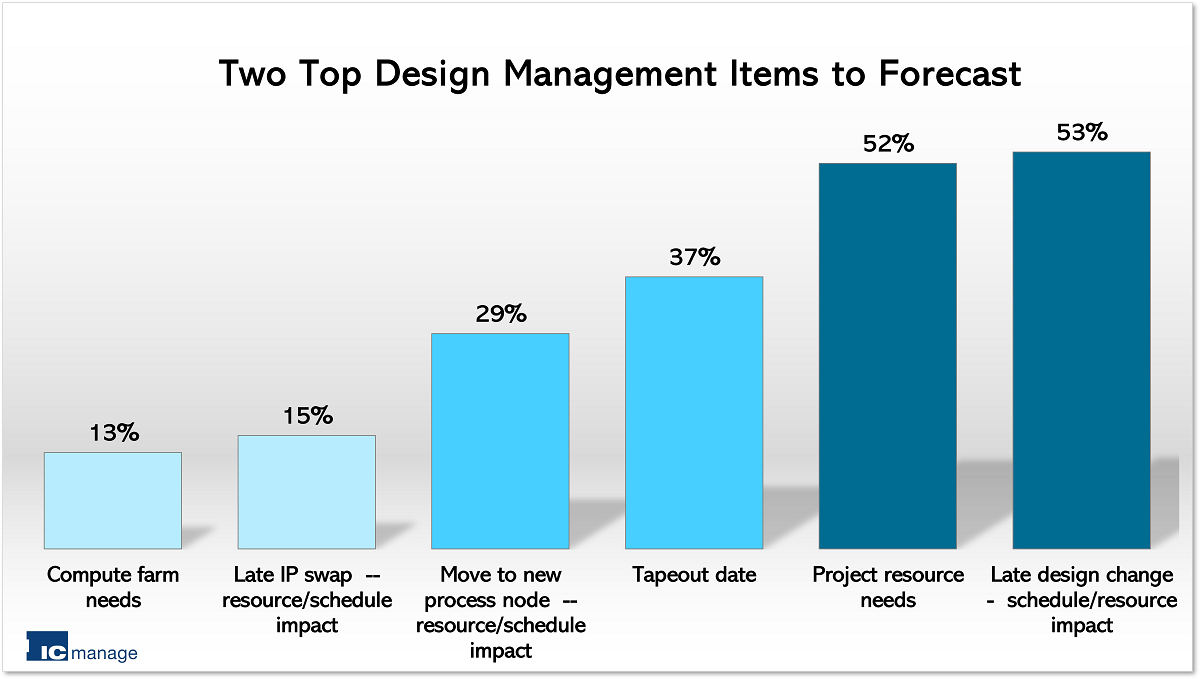
II-3. IP creation, IP reuse & monitoring infrastructure
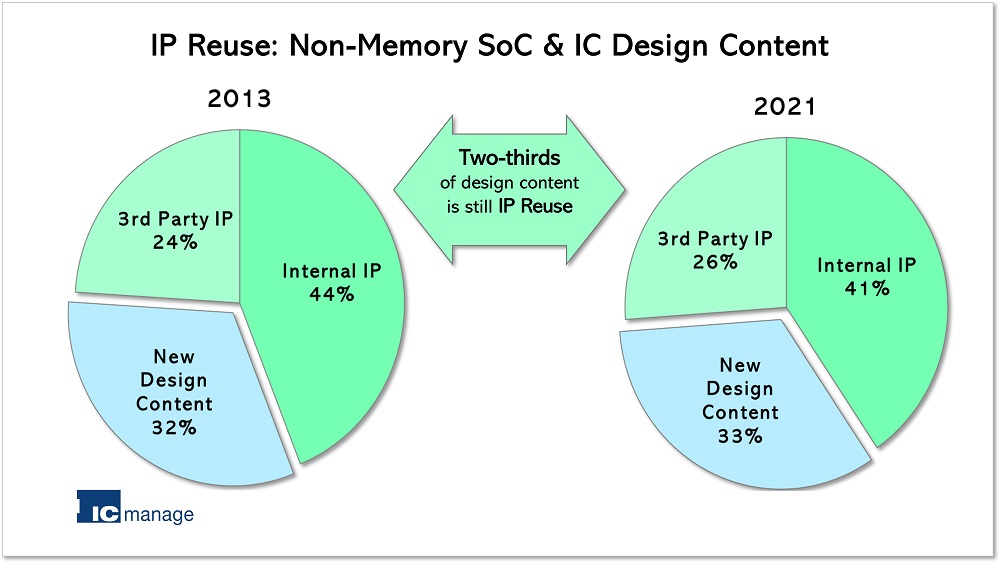
Companies continue to heavily reuse IP to leverage their engineering efforts. Two-thirds of design content continues to be reused IP in 2021, matching the 2013 survey findings. There was a minor increase in the use of 3rd party IP over internal IP.
Effective IP reuse is a major component of design & IP management, requiring an intricate mix of IP creation best practices, cataloguing, and ready access to the IP across design teams.
Additionally, IP traceability – IP usage monitoring, version management and bug fixes – ensures that a company maximizes its investment in internal intellectual property. When an IP creator makes a change, including fixing a bug, other users need immediate awareness of that change.
II-4. Managing multiple design data management systems
The continuing increase in mergers and acquisitions requires companies to combine geographically diverse development teams using different design & IP management systems.
The percent of companies deploying multiple design data management systems (commercial and/or open source) grew to 71 percent in 2021, up from 56 percent in 2014.
Only 29 percent of organizations have only one design & IP management system. 31 percent have two DDM systems, and 40 percent have three or more DDM systems.
Only 29 percent of organizations have only one design & IP management system. 31 percent have two DDM systems, and 40 percent have three or more DDM systems.
Half of survey respondents (51%) would like to see better integration between design data management systems.

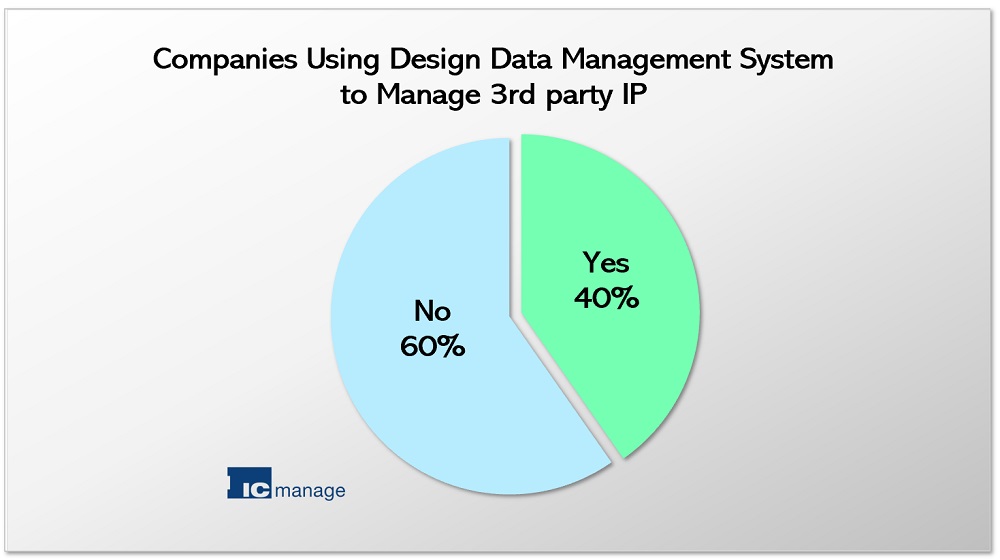
An example where integration is important is for IP reuse. Although a best practice is to manage third party IP with a DDM system, only 40 percent do so.
One obstacle is some DDM systems are unable to fully accommodate IP from other design & IP management systems.
II-5. Cost-effective, fast cloud compute access
System and Semiconduction design and verification organizations have been slower to adopt cloud than other industries, as they ensure their security concerns are fully addressed. However, an increasing number see the opportunity to leverage the cloud to ramp up software and hardware resources, either overall, or during peak times.
Nearly 70 percent of organizations are expected to utilize cloud for design and/or verification over the next two years. This is double the current number already using the cloud in some way (32%). Conversely, only about 30 percent of organizations expect to continue to exclusively use on-premise compute farms in two years.
The organization’s cloud usage ranges from individual tools and/or hybrid cloud bursting, to full cloud design solutions. Hybrid cloud bursting is the most common approach. (The pdf has more granular details on this topic).
![]()
III. Conclusion: Future-Proofing Design & IP Management Ensures Alignment
The most advanced design & IP management systems securely connect multisite design and verification teams not just with each other – but with the past and the future.
The goal is for all team members to be aligned to management’s success plan, with adaptable workflows and high visibility to stay aligned as the plan evolves. This level of smooth collaboration frees up time and focus for amazing innovation.
With distributed design & verification teams facing massively increasing data volumes, there’s a tremendous demand for scalable, efficient multisite collaboration, IP reuse, and design schedule and resource requirement predictions, along with infrastructures to enable quick ramp up for design and verification in the cloud.
IV. About IC Manage GDP-XL, IP Central, Envision & Holodeck
IC Manage, a design data management company, provides products that address the key metrics discussed above, maximizing multisite collaboration and productivity.
1. IC Manage GDP-XL multisite design & IP management system’s secure, change-based architecture with flexible database organization maximizes the use of metadata to speed up database & data operations.The IC Manage GDP DDM system can also be run in the cloud.
2. IC Manage Envision big data analytics can automatically deliver design and verification progress analytics based on design data.
3. IC Manage IP Central supports IP publishing, IP reuse & monitoring, with intuitive search & fast assembly of complex IP hierarchies and full IP traceability, including updates & verification status. IP Central supports IP across different DDM systems.
5. IC Manage Holodeck high speed scale out I/O can be used for hybrid cloud bursting; it instantly creates a virtual projection of the entire corporate file space in the cloud.

ABOUT THE AUTHOR
Dean Drako is founder, President & CEO of design data management company IC Manage, which has ranked as a Deloitte Fast 500 fastest growing technology company. Drako is also CEO of Drako Motors, where he launched Drako GTE, a 206-MPH, 1200HP, four-passenger electric luxury supercar.
Drako was founder, President, and CEO of Barracuda Networks, where he created the IT security industry’s first spam filter appliance and then grew the company to more than 140 products and 150,000 customers from its inception in 2003 through 2012. Barracuda went public on the NYSE. Drako did his undergraduate study at the University of Michigan in Electrical Engineering, received his MS in Electrical Engineering from the University of California at Berkeley, and holds 46 patents.
